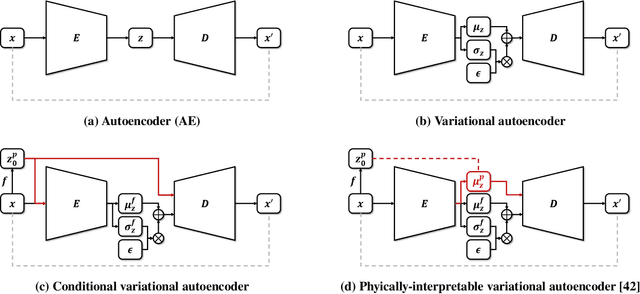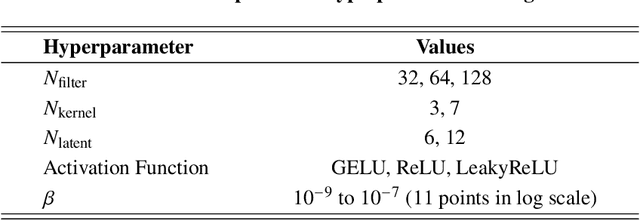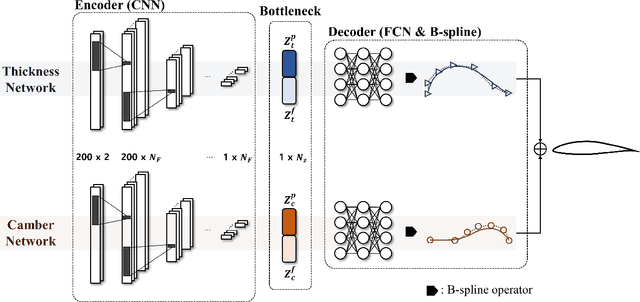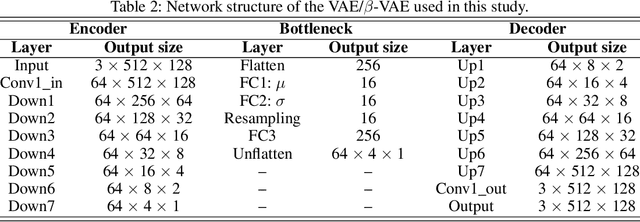Yu-Eop Kang
Compact and Intuitive Airfoil Parameterization Method through Physics-aware Variational Autoencoder
Nov 18, 2023



Abstract:Airfoil shape optimization plays a critical role in the design of high-performance aircraft. However, the high-dimensional nature of airfoil representation causes the challenging problem known as the "curse of dimensionality". To overcome this problem, numerous airfoil parameterization methods have been developed, which can be broadly classified as polynomial-based and data-driven approaches. Each of these methods has desirable characteristics such as flexibility, parsimony, feasibility, and intuitiveness, but a single approach that encompasses all of these attributes has yet to be found. For example, polynomial-based methods struggle to balance parsimony and flexibility, while data-driven methods lack in feasibility and intuitiveness. In recent years, generative models, such as generative adversarial networks and variational autoencoders, have shown promising potential in airfoil parameterization. However, these models still face challenges related to intuitiveness due to their black-box nature. To address this issue, we developed a novel airfoil parameterization method using physics-aware variational autoencoder. The proposed method not only explicitly separates the generation of thickness and camber distributions to produce smooth and non-intersecting airfoils, thereby improving feasibility, but it also directly aligns its latent dimensions with geometric features of the airfoil, significantly enhancing intuitiveness. Finally, extensive comparative studies were performed to demonstrate the effectiveness of our approach.
Physics-aware Reduced-order Modeling of Transonic Flow via $β$-Variational Autoencoder
May 02, 2022



Abstract:Autoencoder-based reduced-order modeling has recently attracted significant attention, owing to the ability to capture underlying nonlinear features. However, its uninterpretable latent variables (LVs) severely undermine the applicability to various physical problems. This study proposes physics-aware reduced-order modeling using a $\beta$-variational autoencoder to address this issue. The presented approach can quantify the rank and independence of LVs, which is validated both quantitatively and qualitatively using various techniques. Accordingly, LVs containing interpretable physical features were successfully identified. It was also verified that these "physics-aware" LVs correspond to the physical parameters that are the generating factors of the dataset, i.e., the Mach number and angle of attack in this study. Moreover, the effects of these physics-aware LVs on the accuracy of reduced-order modeling were investigated, which verified the potential of this method to alleviate the computational cost of the offline stage by excluding physics-unaware LVs.
 Add to Chrome
Add to Chrome Add to Firefox
Add to Firefox Add to Edge
Add to Edge